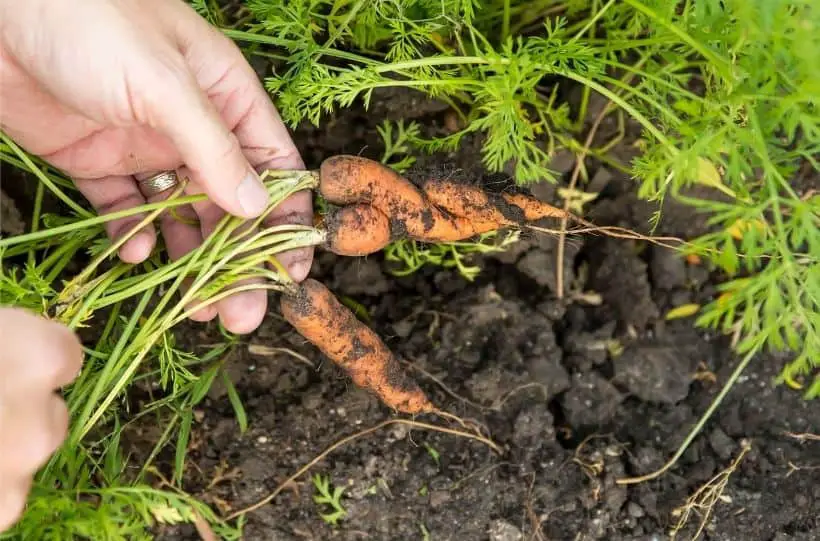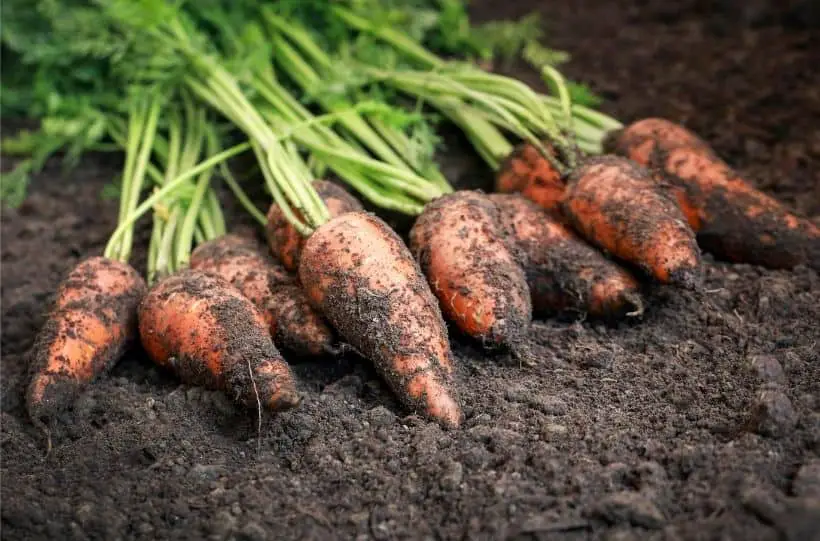How to Grow Carrots in the Garden
This post may contain affiliate links. Please see the privacy policy for details.
Carrots are a classic staple vegetable for gardeners everywhere. With a great flavor that is perfect on its own or in a variety of dishes, carrots make for a great addition to any garden.
Growing carrots can be a bit difficult. While they are easy plants to grow, they can be hard as you cannot observe their progress during the growing period. As such, it is important to take your time and ensure that you take the necessary steps so that your carrots can thrive.
Following is the rundown on how to best grow carrots and yield a delicious batch of tasty vegetables.

Types Of Carrots
There are a few different varieties or types of carrots to grow, and ultimately which one you choose will depend on your preferences and climate. For instance,
- Bolero and Danvers carrots are hardier carrots that are resistant to thicker soil, pests, and blight.
- Lunar Whites and Solar Yellows offer a vivid, sweet taste that is distinct from other carrots.
- Little fingers are smaller carrots that are preferable for container gardening.
- Nantes carrots grow up quickly, making them great vegetables for areas with a shorter growing season.
This is only a selection of carrots, as there are many more types out there, each with its own unique advantages and flavors.
When & Where To Plant
Typically, carrots take about two to four months to fully grow and should be planted when it is cool outside but not cold. If it is too cold, carrots will not successfully germinate and won’t grow.
Carrots should be planted about a month before the last frost date to ensure a successful growth period. You can extend the harvesting season of your carrots by staggering planting them by about two weeks in between plantings.
You will want to plant your carrots somewhere where they can receive eight hours of sunlight per day. Further, you will want quality loam soil that offers good drainage for your carrots. Carrots can be overwatered and will wilt if they are met with such a problem.
Further, the soil should be sandy and not too thick. Carrots will not grow properly if the soil is too thick, so ensuring that it is malleable is a must.
Carrots also grow well in buckets or containers, for those who do not have a lot of room to grow a garden.
Planting Your Carrots
Carrots are not ideal plants for starters and should be grown directly from the seed. This will prevent problems later on.
Carrots are notoriously tricky to actually plant due to the small size of the seeds. This means that planting can be more complex than it should be. However, if you do not want to deal with seeds, there are other options.
You can buy seed tape, which is a roll of tape with carrot seeds embedded into it. Simply roll the tape out over the lane and bury it with dirt. Seed tape makes the planting process incredibly simple.
If seed tape isn’t really your thing, you can also buy pelleted seeds. Pelleted seeds are seeds coated in an organic material making them easier to handle and plant. This is better for container gardening or planting a small number of carrots in your garden.
Unfortunately, both seed tape and pelleted seeds are typically more expensive than standard seeds, so it is up to you to determine if the extra cost is worth it over the extra hassle. Planting carrots with regular seeds is of course doable; it just takes a little bit more time and effort.
When planting your seeds, the seeds should be planted about an eighth of an inch below the ground with about fifteen inches of space between rows. Seed clumping is okay to start, as the carrots will need to be thinned later on down the line as crowded carrots will have twisted roots.

Once they are planted, you will want to carefully rake over all of your seeds before patting down the soil. This will ensure that the seeds make contact with the soil which will start the growing process.
Harvesting Your Carrots
You can begin to harvest carrots at pretty much any point in their growing cycle, however, it is best to wait until they are about as thick as a finger for best results. Harvesting them early on means smaller carrots that are great on their own.
Harvesting closer to the winter frost will yield a sweeter taste in your carrots. Ultimately when to harvest is up to you, however.

Carrots are a staple vegetable for many gardeners, and for good reason. They taste great and are used in plenty of recipes. Further, they can be grown in many different climates. With the tips on this list, you too can get started growing your own carrots.
And for more guides on growing vegetables in your garden, check out these:
